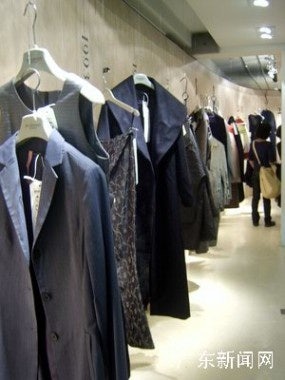Hotels, Fashion Brands Becoming Increasingly Global; Competing with Well-Established Foreign Brands In Chinese Market#

Home-grown Chinese luxury brands have been in the news lately, with articles focusing on how their “Chinese flavor” is transitioning from a liability into a selling point. As Chinese consumers have opened up to global brands — and increasingly taken them for granted in some cosmopolitan centers — a space has opened up in the Chinese luxury market for domestic luxury brands.
These luxury brands, which are following the lead of Hong Kong fashion brands like Shanghai Tang and designers like Swire, are starting to incorporate traditional Chinese cultural aspects into a more globalized luxury style, creating an appealing Sino-Global market segment. As these Mainland brands start to pick up steam and compete on a broader scale, eventually spreading into overseas markets, it’s likely that Chinese luxury brands will develop a clout on par with their French or Italian counterparts in time.They just need to figure out their marketing and growth strategy, and need to fully get over the hump of Chinese luxury consumers often looking down at domestic brands and products.
Going along the cosmopolitan path of developers like Swire, BizChinaUpdate recently wrote about the Zendai Group, which is setting out to launch China’s first “bona-fide luxury hotel brand.” With their first luxury hotel slated to open next year in Shanghai, Zendai hopes to capitalize on the buzz surrounding 2010 World Expo and use the event as a launchpad for their brand.
As BizChinaUpdate wrote,
The two Shanghai hotels that will open in close proximity in June 2010 are the Zendai Hotel Yin, a 75-room boutique hotel that will be positioned in the same pricing category as Park Hyatt, Mandarin Oriental and Peninsula; and the Zendai Art Hotel, a business-focused luxury hotel with 313 rooms and extensive MICE facilities, including a 5,000 sqm rooftop garden and terrace, that is positioning itself alongside brands such as Shangri-La and Grand Hyatt.
Developed by Zendai Group, the art-inspired hotels form part of the multi-use Himalayas Centre – which features an art museum, shopping mall and 1,600-seat auditorium – and is being touted as “an archisculptural icon for the 21st Century China.”
Designed by Arata Isozaki, who styled the Barcelona Olympic Stadium and Los Angeles Museum of Art, the interior design, which blends both Chinese and Japanese design motifs, has been created by Khuan Chew, whose firm KCA created the iconic interiors of the Burj al Arab in Dubai.
More recently, HospitalityBizIndia profiled the newest Zendai location, which joined The Leading Small Hotels of the World last month:
Zendai Hotel Yin, a luxury city retreat set to open in Pudong, Shanghai in 2010, has joined The Leading Small Hotels of the World, a marketing consortium for luxury hotels and resorts. With 75 rooms, Zendai Hotel Yin will have a traditional Chinese medicine wellness centre and 24-hour butler service.
Room will be 60 sq metres in size and there will be a Club Lounge, a library with meeting rooms with teleconferencing facilities. Highlights will include a Chinese Tea House and a contemporary Chinese restaurant. Himalayas art museum, DaGuan Theatre with multi-functional auditorium having a seating capacity of 1,650 and a shopping mall will be set up in the complex.
As Mainland designers and developers enter the market and become increasingly influential, fashion and other luxury companies are likely to follow. As the organizers of last year’s China Luxury Summit noted, Chinese luxury brands have the motivation to reach their lucrative domestic market — they just haven’t quite figured out how to do so yet. “The Chinese have not only been the buyer[s] of luxury goods,” these organizers wrote, “but also they hoped to carry their culture, technology and dream especially when they can merge & acquire a[n] oversea luxury brand with sufficient strength [and] depth.”While the Mainland already has luxury fashion brands like Liwai (例外), which is growing in popularity, these brands still hover around the mid-range luxury class. However, these brands mainland penetration rate is critical for their ability to move into the upper-range and eventually spread overseas. It will be interesting to watch these brands grow in the next several years, as Mainland consumers discard their previous “China-stigma” and look inward for luxury brands that more accurately reflect modern China’s mix of traditional and contemporary influences. We’ll continue to keep an eye on developments in domestic luxury brands, and report on new luxury start-ups or events as they occur.